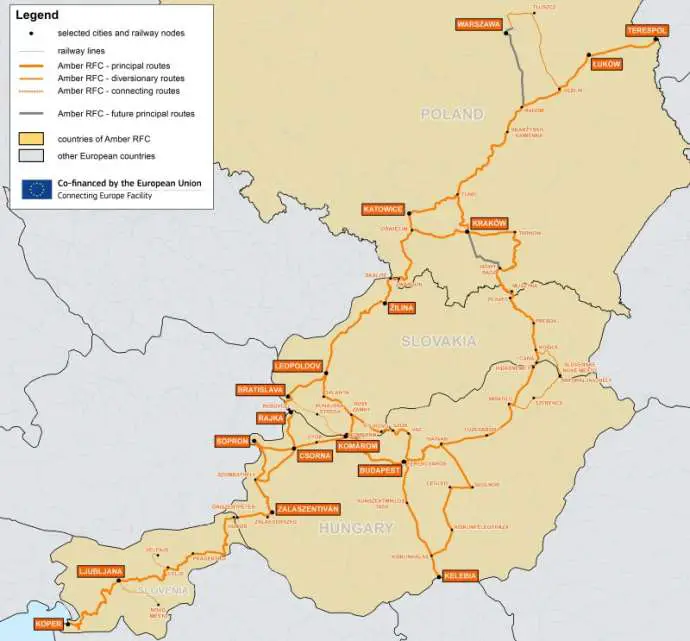STA, 18 September 2019 - The Amber Rail Freight Corridor, which connects industrial centres and inter-modal terminals in Poland, Slovakia, Hungary and Slovenia, was formally launched in a ceremony in Koper on Wednesday. It has been operational since January as the first rail freight corridor established on the initiative of member states.
The corridor connects the Adriatic Sea - with Koper being the only maritime port within the corridor - with the Poland-Belarus border, and its position represents an alternative to the transport routes between the north and south of Europe.
The name Amber Rail Freight Corridor refers to the name of an important ancient trade route, which broadly followed the same alignment.
Gerhard Troche, the managing director of the project, said at the ceremony that the corridor was a platform which enabled all stakeholders to address joint issues and challenges.
These include differences in work processes, technical differences or different transport rules in countries, which cause delays and problems in international rail freight transport, he added.
Its purpose is to improve cross-border rail freight transport, Troche said, adding that "we operate on several levels", including relevant ministries in individual countries, operators of rail networks and advisory groups for railway infrastructure users.
He believes that the Amber Rail Freight Corridor is a great advantage compared to practice in the past, when a certain rail operators needed to communicate separately with stakeholders in each individual country.
"Communication has thus become much easier," Troche said, adding that the project also offered a one-stop-shop service for regulating issues related to transport capacities and providing information to clients.
Andrea Mosoczi, the chair of the management board, added that a study would be carried out which would help recognise open administrative, infrastructural and operational issues and priorities.
You can learn more about the project here






